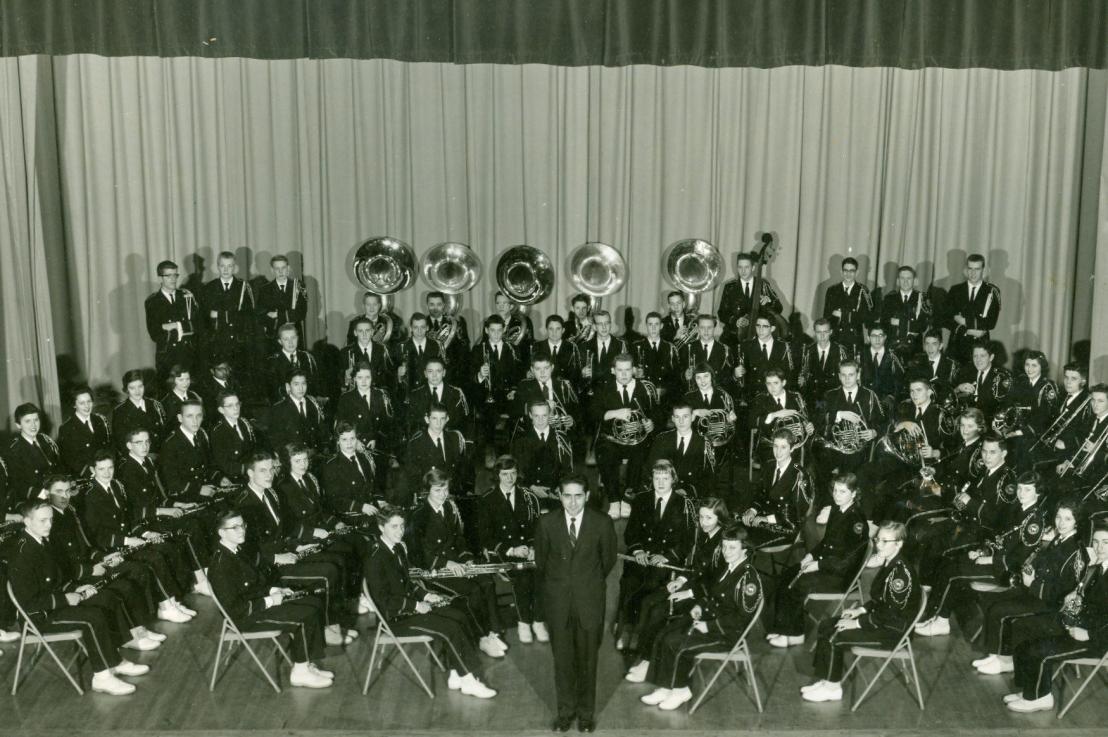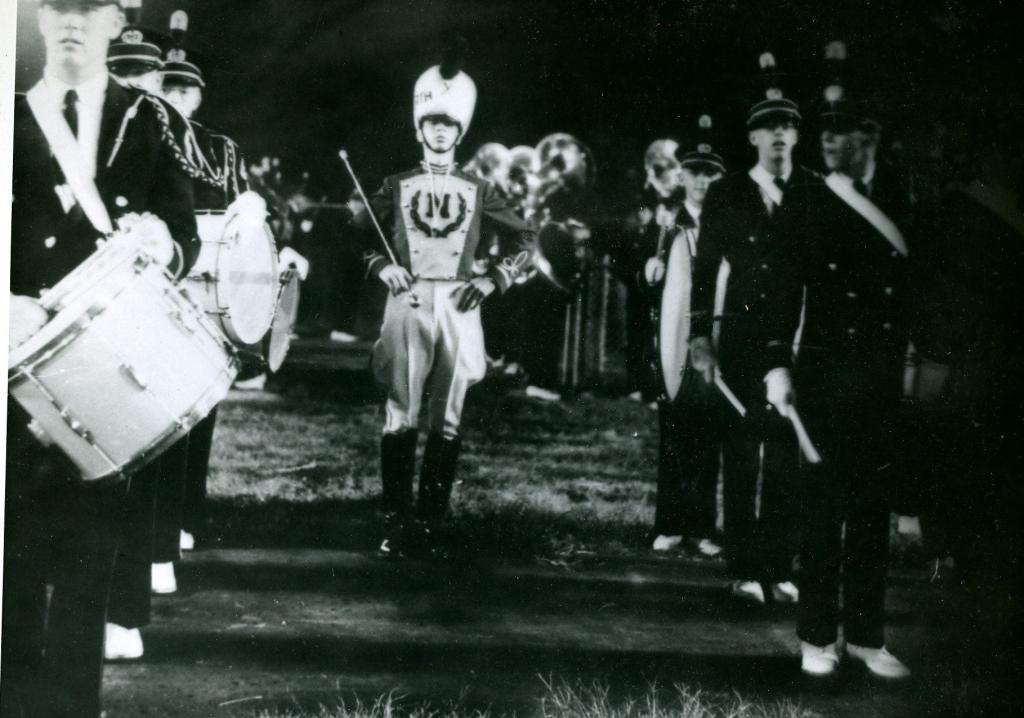A tribute to Les Susi
Ask anyone who played an instrument about their experiences at Columbus, Ohio’s North High, and they would be sure to mention Les Susi first thing. While North High had plenty of gifted teachers, Les was a unique influence on so many lives. He was a teacher, a leader, a coach, a fine musician and a good friend. Let me tell you about how I met Les Susi.
In the spring of my 9th grade year at Crestview Junior High, Les came to all the junior high schools to audition kids for the high school band and orchestra. There was also a Junior Band for those who weren’t quite ready. I was thrilled to learn that I made it into the Concert Band and amazed to learn that included being in the marching band during football season.
Practice for the marching band began in the last two weeks of August, two weeks before school started. We rehearsed from 8am-noon 5 days a week for two weeks, learning how to march and play together. Unlike New England where late August begins to cool off, the last two weeks of August in central Ohio were really hot! So, we did our outdoor practice first at 8am when it was cool and came inside later to work on music.
If you’ve watched military parades, the soldiers basically walk using the same sized step, usually around 30 inches, or 6 steps in 5 yards (180 inches). Marching bands mostly march using shorter 22.5” step, so you get 8 steps in 5 yards. This gives you time to pick up your feet higher, giving a flashy effect called the “piston step” or just “8 to 5.” It also matches the number of beats in 2 measures of a march.
Similarly, the military “about face” just means that you put one foot forward and pivot on the ball of your foot to reverse directions. But a common marching band about face is essentially “one-legged,” where you rotate on the ball of your left foot, while swinging your right leg around to give the momentum that creates the turn. This takes a bit of practice but looks pretty cool.
Marching together means that you all take the same sized steps so that each row marches down the field in a straight line. We practiced this a great deal. Our band had 9 rows of 8 players each, grouped by instrument section. The squad leaders marched on the outsides of each row checking that everyone stayed in line and calling them out if they got ahead or behind. This too took some practice.
The Music
But once it got hot out, we came inside for a break followed by music rehearsals. We were, I think, the first class to benefit from the new air-conditioned band room. (Thank goodness!) All the music we played had to be memorized. We didn’t carry music at all. So, we had to learn our parts for the school march, Polar Pep, the loyalty song (a tedious hymn) and the Star-Spangled Banner in both Bb and Ab, (the arrangements were different, not just transposed) and the National Emblem march.
Once we got beyond the basics, we started learning the music (and the formations) for the first half-time show. Again, we not only had to memorize the music, but where we stood in each formation and how we got there. We were in 9 rows of 8 players each, and unlike the Ohio State model, we were not an all-brass band. In addition to trumpets, trombones, baritone horns and tubas, our band included flutes, clarinets, and saxophones (I think both alto and tenor saxes). And of course, a whole row of percussion: bass drum, cymbals and snare drums for sure. Sometimes other percussion instruments sneaked into the half-time shows, too.
The rows had letters, and we were arranged alphabetically but only some letters were used. My row was R row, and we were all clarinets. I think the trumpets were in front. R row was second from the back. When Les gave out the charts for each formation, we were identified by our row letter and number, I think I was R3 the first year. The next year, I was an Asst Squad Leader in R8 and my senior year, I was the squad leader at R1.
So, for every formation, we got a drawing of the field and where each of us stood relative to the yard lines and the hash marks that help officials center the ball. It helped us center the band on the field in the same way, and we knew to head for a spot near a yard line and hash mark. When we first stood in the positions for these formations, Les would sometimes move people a bit to make the formation clearer. We noted that and memorized our positions.
Les was particular and insistent on excellence in our formations, our marching and our playing and let us know if we weren’t doing what he expected. During outdoor rehearsals, he carried a power megaphone to tell us on the field what we needed to do better. He was not above the occasional “dammit” when we screwed up but tried to remember that that carried into the classrooms in the building behind us, and to not swear into the megaphone.
To make sure that we didn’t let our attention wander, the band had several “I Goofed” signs to award players who made errors where they should have known better. I only got one once: I think my Junior year, when I was simply not paying attention. We were supposed to wear them all day, but I soon found that people pulling on the sign and could choke me, so I put it into locker and returned it the next day.
Every half time show had a topic, and we usually had a theme that we played when marching to each formation, as well a song segment we played while in position. We had to memorize all this music each week, but usually these were pretty short. I remember Les’s arrangement of “South America take it Away” was only about 16 bars long.
Les wrote his own arrangements for all the music we played on the field in his inimitable jazz-inflected harmonic style, which often include chords you never heard before in those tunes, including ninth chords and even thirteenths! They were always fun to play once we got our arms around them.
The high school football season was usually 11 games on successive Friday nights, with about half at home and half away. We had to have a new show for every home game, but when we went to away games, we usually repeated last week’s home game show.
When Les started at North in 1953, he brought his experience playing in the Ohio State Marching Band to North, including the pregame ceremony. The band members marched in line into their rows in the endzone to a drum cadence. Then, called to attention, they played the fanfare that starts Polar Pep. You can listen to it here, as recorded by us in 1960. Note the interesting harmonies in the fanfare, clearly written by Les Susi. At the end of the fanfare, during quick chords, the drum major struts through the middle of the band to the front, and then blows his whistle to start the band marching down the field playing the fight song. North was at the time the only high school with an original fight song, composed in the 1930s. But this arrangement clearly had Les’s touch, including a countermelody in the trombones and baritone horns.
When we got to the end other field, the other team’s band joined us, and we played one of two versions of the Star-Spangled Banner, and then marched back while playing National Emblem. At the end of the field, the drum major tossed his baton over the goal posts. During my Junior and Senior years, the drum major was my good friend Jim McDonald. We’d done some theater together and I knew that he was very talented indeed. I don’t think he missed the catch of his baton from those throws more than once in the two years we had him. Jim went on to study music education at Ohio State and eventually became the choir director at Crestview Junior High, and then moved up to assistant choir director at North, and finally became the choir director for a number of years until North was closed in 1979.
One unique formation Les developed for us was Script North, where the band spells out North in script with the drum major leading the way, and players dropping off the line to stand where each letter is formed. It took a lot of practice to get it right, but we always did it at Homecoming, at least. As far as we know, we were the only local high school attempting a script formation at the time.
After working together for 2 weeks in August and 1-1/2 hours every morning, we were a pretty tightly bound group and very proud of our band. In fact, I don’t think any of our competitor high schools quite reached the standards that Les had set for us, and that we mostly achieved.
Concert Band
Football season came to an end just before Thanksgiving, and suddenly we became a Concert Band, not a marching band. We come in at 8:45 for first period instead of at 8am for marching practice, and we are no longer excused from gym classes.
But concert band was a whole new experience for some of us. Les’s musical standards were very high and the music much more complex: it requires fingering and breathing techniques we never had time for on the field. Les said more than once, that it took him at least a month to get us to make the transition to more serious music making.
Instead of playing every Friday night, we now were preparing for Winter and Spring Concerts. And while some of the music is lightweight: some selections from Broadway and Folksong Suite, we also tackled more serious pieces like Gustav Holst’s Suites #1 and #2 for Military Band. We did the first suite my sophomore year and the second suite as part of concerts my junior year.
Here’s a professional recording of Suite #1. The first movement is called a Chaconne, which I gradually learned is a piece where the bass line repeats throughout the movement, as harmonies and other melodies slowly build on top of it. This style of music originated in organ pieces, but Holst shows how well it works for concert band.
We quickly learned that playing indoors in a concert band means playing less loud and more carefully in tune. And the music is considerably more challenging: we spent weeks woodshedding the Holst #1 that year.
Oh, and did I mention State Contest? Each year in the spring, the band jumped on busses to go somewhere to play for judges and get praise and criticism. And a rating. Les’s North High Band consistently received nearly all 1 ratings. Some of our sister schools usually went as well but few scored as high as often as we did. We played a piece of our choice, a piece that was required, and then were asked to sight read a piece we’d never seen before. The conductor was given 3 minutes to study the score, and 3 more minutes to tell us what to watch out for, and then we read through it as best as we could. But because of Les’s skill we often got 1’s in that section too.
During my Junior year, we tackled the Holst Suite #2, which presented different challenges, including a Fantasia that mixed the Irish dance tune, the Dargason with Greensleeves. By this time, I really began to truly appreciate classical music. When you slowly learn a piece as a group and see how it is put together, you begin to see the great power and beauty of classical music. On the other hand, we also played selections from the Music Man that year.
Our Senior year, Les dropped an enormous challenge on us. The American composer Vittorio Gianini was well known in classical band circles for a series of significant compositions, and in 1957 had just published Praeludium and Allegro. We begin tackling this modern, dissonant piece and initially hated it every day. But after a month or so, when we had gotten through its technical challenges, most of us fell in love with it and felt it was one of the best things we’d ever done. Here’s a professional recording. Here’s another version that is closer to our interpretation. Note how the Praeludium theme resurfaces under the Allegro about 6 minutes into the piece. We played it at our Spring Concert and thrilled the audience with it, and took it to State Contest, and got all 1’s.
In case you think that band is all Les did, you might be surprised to learn that he also taught the orchestra, a dance band and a woodwind ensemble. He also taught theory classes, and while I couldn’t schedule that class, he gave me some valuable advice when I got interested in music composition.
In Conclusion
Les Susi was and still is at 94, an amazing musician, teacher and leader. He helped us all grow as musicians and as leaders and taught us a lot about music we would never have learned any other way. When Whetstone High School opened in 1961, Les “was moved” there by Whetstone parent demand. He continued teaching there for 16 years and then was asked to lead the Fort Hayes Arts and Academic High School. He retired in 1986 but was already a member of the Brass Band of Columbus, as cornet soloist, associate conductor and chief arranger. Not only is he the person I remember most from North, he was probably the most demanding and got remarkable results. As my friend Sandy (Helm) Robert said to me, “he strove for perfection and frequently achieved it.”








